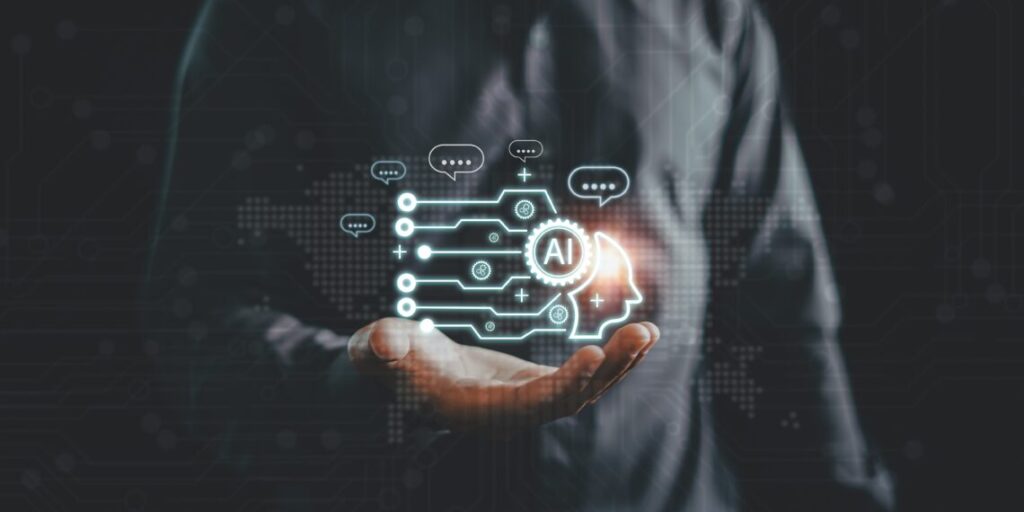In recent years, the use of Artificial Intelligence (AI) and automation has skyrocketed, transforming industries, enhancing productivity, and reshaping the global workforce. From autonomous vehicles to AI-powered customer service chatbots, these technologies are infiltrating nearly every aspect of our lives, offering opportunities for innovation and efficiency. However, with these advancements come both challenges and questions about the future of work, data privacy, ethics, and society as a whole.
This blog will explore the growing trend of AI and automation, examining how these technologies are being applied across different sectors, their potential benefits and risks, and how businesses and individuals can adapt to this rapidly changing landscape. Whether you’re a business owner, a tech enthusiast, or someone simply interested in the future, this article will provide an in-depth look at one of the most transformative phenomena of the 21st century.
1. What is Artificial Intelligence and Automation?
Artificial Intelligence (AI)
Artificial Intelligence refers to the simulation of human intelligence in machines that are programmed to think, learn, and problem-solve. AI can be classified into two types:
- Narrow AI (Weak AI): This type of AI is designed to perform a specific task, such as voice recognition, image analysis, or data prediction. Examples include voice assistants like Siri, Alexa, and Google Assistant.
- General AI (Strong AI): A more advanced form of AI, capable of performing any intellectual task that a human being can do. This type of AI is still in its research phase and is not yet available for mainstream use.
Automation
Automation refers to the use of technology to perform tasks without human intervention. Automation can be applied in both physical and digital processes, ranging from assembly lines in factories to software applications that handle administrative tasks.
The main goal of automation is to reduce human involvement, increase efficiency, and eliminate errors. In the context of AI, automation can leverage intelligent systems that not only perform repetitive tasks but also adapt to changing circumstances and make decisions based on data.
2. How AI and Automation Are Changing Various Industries
AI and automation are not confined to a single sector. Their applications span a wide range of industries, from healthcare and finance to transportation and manufacturing. Let’s explore how these technologies are transforming key sectors.
Healthcare
In healthcare, AI and automation are revolutionizing patient care, diagnosis, and administrative processes.
- AI in Diagnostics: AI-powered tools can analyze medical images, such as X-rays and MRIs, with remarkable accuracy. For example, Google’s DeepMind has developed an AI model that can detect over 50 types of eye diseases with greater accuracy than human doctors.
- Robotic Surgery: Robots, controlled by AI, are now used in surgery to perform precise operations, leading to shorter recovery times and fewer complications.
- Chatbots and Virtual Assistants: Virtual assistants powered by AI are improving patient engagement by handling appointment scheduling, medical inquiries, and even mental health consultations.
Finance
In the financial industry, AI and automation are reshaping everything from customer service to risk management.
- Algorithmic Trading: AI algorithms analyze market data in real-time and make trading decisions faster than human traders. This has led to the rise of high-frequency trading, which allows investors to capitalize on small market movements.
- Fraud Detection: AI is also used to monitor transactions for signs of fraud. By analyzing patterns and behaviors, AI systems can flag potentially fraudulent activities much more effectively than traditional methods.
- Robo-Advisors: These are automated platforms that use AI to provide investment advice based on individual preferences and risk tolerance. Robo-advisors make investing more accessible and affordable for everyday people.
Manufacturing
Automation has been a cornerstone of the manufacturing sector for decades, but the introduction of AI has taken it to the next level.
- Smart Factories: AI-powered robots and machines can now monitor production lines, perform quality checks, and even make adjustments without human input. This results in faster production times, lower error rates, and less waste.
- Predictive Maintenance: AI can analyze data from machinery to predict when equipment is likely to fail, allowing for timely repairs and minimizing downtime.
- Supply Chain Optimization: AI algorithms can forecast demand, optimize inventory levels, and streamline logistics, ensuring that products are delivered to the right place at the right time.
Transportation
AI and automation are making transportation safer, more efficient, and more sustainable.
- Self-Driving Cars: Autonomous vehicles, equipped with AI, are capable of navigating roads and making real-time decisions without human intervention. These vehicles have the potential to reduce accidents, ease traffic congestion, and lower carbon emissions.
- AI in Traffic Management: AI can analyze traffic patterns and optimize the flow of vehicles, reducing congestion and improving travel times. Smart traffic lights and route recommendations are just a few examples of how AI is being used to manage urban mobility.
- Logistics and Delivery: Drones and self-driving trucks powered by AI are already being used for deliveries. These technologies help businesses reduce shipping costs and delivery times.
Retail
AI and automation are transforming how businesses interact with customers and manage operations.
- Personalized Shopping Experience: AI analyzes customer data to recommend products tailored to individual preferences, increasing sales and customer satisfaction.
- Inventory Management: Automation in warehouses, powered by AI, ensures that stock levels are monitored in real-time, preventing overstocking or understocking of items.
- Chatbots for Customer Service: Many online retailers now use AI chatbots to answer customer queries instantly, 24/7. These bots can handle a wide range of customer service tasks, freeing up human agents to focus on more complex issues.
3. Benefits of AI and Automation
Increased Efficiency and Productivity
The primary benefit of AI and automation is the ability to increase efficiency. AI systems can analyze vast amounts of data in a fraction of the time it would take a human. In manufacturing, automation can run 24/7 without the need for breaks, resulting in higher output.
Cost Reduction
Automation reduces the need for manual labor, leading to lower operational costs. While there is an upfront investment in AI and automation technologies, the long-term savings far outweigh the costs. Businesses can cut down on errors, reduce waste, and streamline operations.
Improved Decision Making
AI’s ability to analyze large datasets and identify patterns helps businesses make more informed decisions. Predictive analytics, for example, can be used to forecast trends and customer behavior, enabling businesses to make proactive adjustments.
Enhanced Safety
In high-risk industries, such as manufacturing and mining, robots and AI-powered machines can take on dangerous tasks, reducing the risk to human workers. AI also plays a significant role in enhancing safety in autonomous vehicles and transportation systems.
Better Customer Experience
AI can be used to personalize customer interactions, whether it’s recommending products, offering tailored discounts, or providing quick and accurate responses to inquiries. The result is improved customer satisfaction and loyalty.
4. Challenges and Risks of AI and Automation
While AI and automation bring about many positive changes, they also present challenges and risks that need to be carefully managed.
Job Displacement
One of the most significant concerns about AI and automation is the potential loss of jobs. As machines and AI systems take over tasks previously performed by humans, workers in industries like manufacturing, retail, and customer service may find themselves unemployed. This shift could lead to economic inequality if proper retraining programs are not put in place.
Ethical Concerns
AI and automation raise several ethical questions, such as:
- Bias in AI: AI systems are only as good as the data they are trained on. If the data contains biases, the AI can perpetuate those biases in decision-making. This is particularly concerning in areas like hiring, lending, and law enforcement.
- Data Privacy: AI and automation rely on vast amounts of data to function. As businesses collect more personal data from users, there are increasing concerns about data privacy and security.
- Lack of Accountability: In some cases, AI systems make decisions without human oversight. If something goes wrong, it may be difficult to determine who is responsible for the mistake.
Cybersecurity Threats
The more automated and AI-driven systems become, the more vulnerable they are to cyberattacks. AI could be used by hackers to exploit vulnerabilities in automated systems, leading to potential breaches in security and privacy.
5. The Future of AI and Automation
The future of AI and automation holds immense potential, but it also requires careful consideration and regulation. Experts predict that AI will continue to evolve, moving closer to General AI, while automation will become even more widespread.
In the coming years, we can expect to see the following trends:
- Increased Collaboration Between Humans and AI: Rather than replacing human workers, AI is likely to augment human abilities. Human workers will collaborate with AI systems, using them as tools to make better decisions and perform tasks more efficiently.
- Ethical and Legal Frameworks: Governments and organizations will need to establish clear ethical guidelines and legal frameworks for AI and automation, ensuring they are used responsibly and transparently.
- Job Creation in AI-Related Fields: While some jobs will be displaced, the growth of the AI and automation sectors will also create new job opportunities in fields like data science, machine learning, and AI ethics.
- Global Economic Impact: AI and automation will continue to drive economic growth, particularly in developing countries where these technologies can leapfrog traditional development stages.
6. Conclusion
The increased use of AI and automation is reshaping industries, enhancing productivity, and offering unprecedented opportunities for innovation. However, as with any technological advancement, it brings challenges that need to be addressed carefully. Job displacement, ethical concerns, and data security are just a few of the issues that need to be managed as AI and automation continue to evolve.







